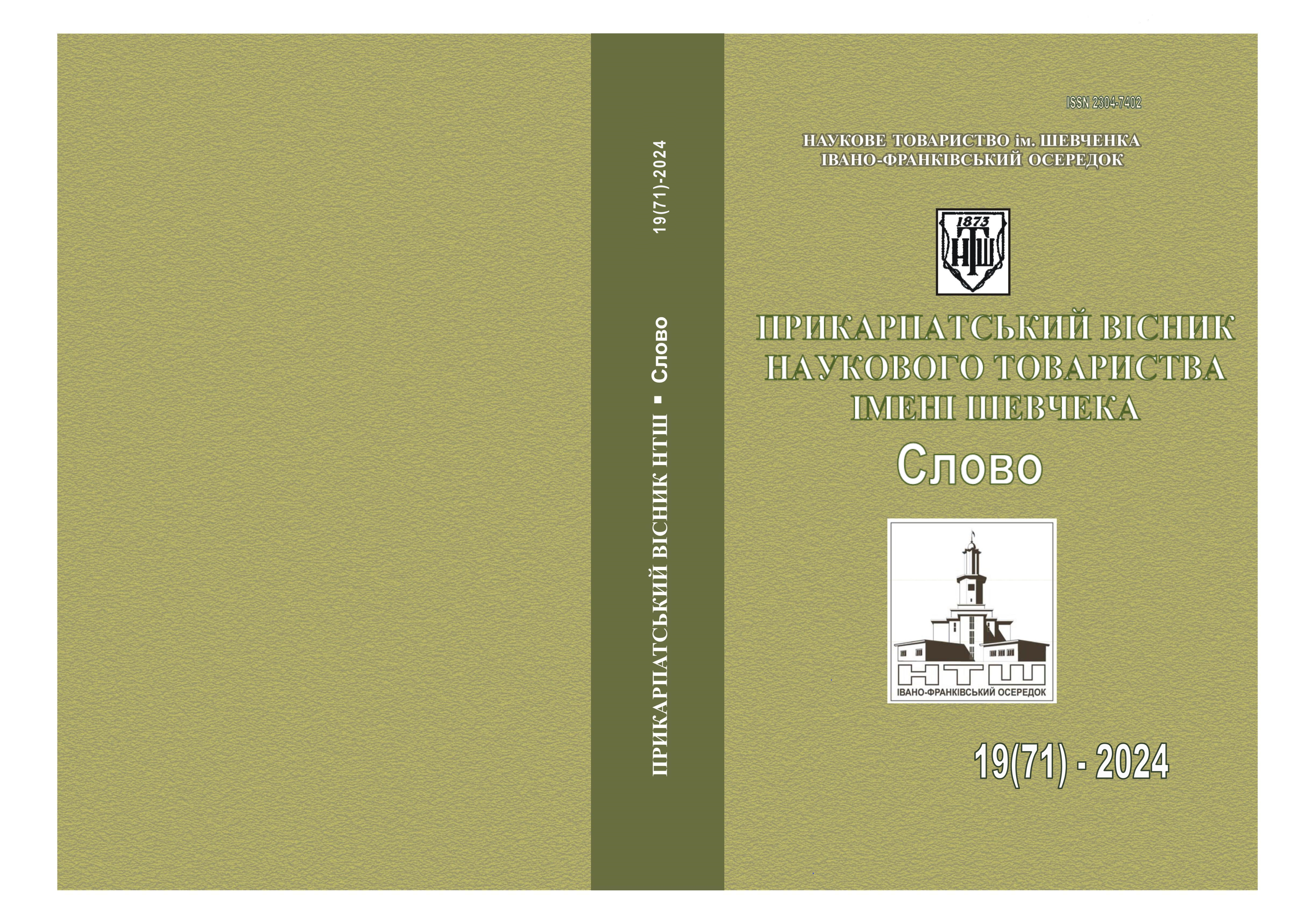PHRASEOLOGISMS WITH NUMERICAL COMPONENTS IN UKRAINIAN, ENGLISH AND CHINESE
DOI:
https://doi.org/10.31471/2304-7402-2024-19(71)-153-165Keywords:
phraseological unit with a numerical component, category of quantity, linguistic universal, hundred, thousand, ten thousand, one million.Abstract
Abstract. The relevance of the article is due to the need to deepen the integration of various achievements of the Ukrainian language and culture into the global cultural fund. The purpose of the article is to study the verbalization of the language universal “all” on the basis of phraseological units with numerical components hundred, thousand, ten thousand, one million on the material of Ukrainian, English and Chinese languages. The following tasks are set: 1) consideration of the category of quantity as a component of the language universal “all”; 2) definition of lingual and extralingual components of the quantity category; 3) selection and classification of phraseological units with numerical components hundred, thousand, ten thousand, one million in Ukrainian, English and Chinese; 4) implementation of linguistic and comparative analysis of phraseological units; 5) systematization and generalization of the results obtained to clarify and deepen the content of the language universal “all”. In the research process, a comparative method, a descriptive method, a component analysis method, and an interpretation method were used.
Operating with lingual and extralingual facts, their transformation and combination becomes the basis for further conceptualization of generally valid concepts in the linguistic picture of the world. The category of linguistic quantity in the article is considered as a component of the linguistic universal “all”. The results of a comparative analysis of idiomatic expressions with numerical components in three languages enable to partially detail and deepen the content of the universal “all”.An important place in the cultural system is occupied by the symbolism of numbers: Western, Slavic and Eastern cultural traditions have their own characteristic features. In Chinese culture, one of the representatives of the meaning of completeness is the number ten thousand. In Ukrainian, among phraseological units with the above-mentioned numerical components, the most frequent component is hundred. Further study of the representation of numbers in Ukrainian, English and Chinese allows us to find out some of the philological, historical, cultural features of the speakers of these languages.
References
Баранцев, К. (2005). Англо-український фразеологічний словник. 2-ге вид., випр. Київ: Т-во «Знання», КОО.
Голубовська, І. (2004). Етнічні особливості мовних картин світу. Київ: Логос.
Готлиб, О. М. & Му, Хуаин. (2019). Китайско-русский фразеологический словарь. Иркутск: Изд-во ИГУ.
Кобзев, А. Учение о символах и числах в китайской классической философии. URL: https://www.phantastike.com/philosophy/doctrine_symbols_numbers/djvu/view/ (Дата звернення: 9.04.2023).
Лисиченко, Л. (2009). Лексико-семантичний вимір мовної картини світу. Харків: ВГ «Основа».
Символіка чисел в українській традиції. URL: https://korali.info/usna-tvorchist/simvolika-chisel-v-ukrainskii-tradicii.html (Дата звернення: 4.05.2023).
Український фразеологічний словник. URL: https://slovnyk.me/dict/phraseology/%D1%82%D0%B8%D1%81%D1%8F%D1%87%D0%B0 (дата звернення: 07.04.2023).
Уорд Макаллістер. URL: https://wblog.wiki/uk/Ward_McAllister (Дата звернення: 05.23.2023).
Wierzbicka, A. (1992). Semantics, Culture, and Cognition. Universal Human Concepts in Culture-Specific Configurations. Oxford University press.
Baudouin de Courtenay, S. (1927). Ilosciowosc w mysleniu językowym. Symbolae grammaticae in honorem Ioannis Rozwadowski. t. I. 3–18. Krakow.
Ifrah, G. (2000). The Universal History of Numbers: From Prehistory to the Invention of the Computer, Wiley.
Gazale, M. (2000). Number: From Ahmes to Cantor. Princeton University Press.
Granet, M. (2013). Chinese Civilization (The History of Civilization). Routledge.
Hopper, V. (2011). Medieval Number Symbolism: Its Sources, Meaning, and Influence on Thought and Expression. Literary Licensing, LLC.
高永鑫:《文化视角下的汉语成语研究》,长春吉林出版集团股份有限公司2021.
刘鸿雁:《汉语成语意义研究》,北京人民出版社 2020.
赵丕杰:《成语误用辨析200例》,北京,商务印书馆2021.
赵丕杰:《成语误用辨析手册》,北京,商务印书馆 2018.
徐晖:《100个成语中的》古代生活史》,桂林,广西师范大学出版社2020.

